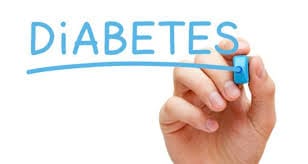Childhood Diabetes
What is Childhood Diabetes?
Diabetes is a condition where the body is unable to process glucose properly. The blood glucose level is too high due to the body not using the glucose correctly. The hormone insulin is needed to allow the body to process glucose from food, into the blood cells of the body, where it is used as fuel for energy. Insulin is produced by the pancreas. Diabetes occurs when cells in the pancreas are unable to create enough insulin, or when the body resists the effects of insulin.
Childhood Diabetes is when the condition presents itself in young children.
Types of Diabetes
There are two types of Diabetes, type 1 and type 2. Both are variants of the same condition. Each involves the way that the body handles insulin.
Type 1:
Type 1 Diabetes is caused by genetic and environmental factors. This means that some children are more genetically disposed to developing diabetes, but it is often triggered by an environmental factor like an illness or virus.
When this trigger occurs, the body’s immune system begins to attack the beta cells (the cells that produce insulin) in the pancreas. This results in a decrease in insulin production. It can take anywhere between a few weeks, to a few years for the cells to be destroyed.
The symptoms of Diabetes do not begin to show until around 90% of the cells are destroyed. So it is hard to tell if your child is developing Diabetes until the symptoms occur.
Just because your child is genetically disposed towards Diabetes does not mean that they will contract it. Type 1 Diabetes cannot be prevented, and is not caused by eating a poor diet. Unfortunately, if your child develops Diabetes, it is a condition they will have to manage their whole life.
Type 2:
Type 2 Diabetes is the more common of the two types, up to 80 or 90% of Diabetics are Type 2. It used to be that Type 2 Diabetes only affected older people, but it is becoming more common in young children. The tendency for Type 2 Diabetes is inherited, but it is largely affected by environmental factors.
The biggest trigger for Type 2 Diabetes is obesity. This is usually because of the main causes of obesity are lack of physical activity and bad diet. That means that the risk of developing Type 2 Diabetes is greatly reduced with a healthy, active lifestyle and a balanced diet with a low amount of fats and sugars.
Symptoms of Diabetes
Both types of Diabetes present with the same symptoms. Often the symptoms for Type 1 come on quickly, whereas they are slower for Type 2. Sometimes Type 2 Diabetes exhibits none of the below symptoms and is only detected at routine medical checks. Some of the symptoms are…
- Excessive drinking and thirst
- Frequent need to pass urine
- Weight loss
- Tiredness
- Changes in Mood
- Bed wetting
- Hunger
- Fungal infections
If you think that your child might be exhibiting some symptoms of Diabetes, or you have any concerns about their health, then make sure you see your doctor.
Treatments:
If your child is diagnosed with either type of Diabetes, then they will need to manage the condition all of their life. This is generally how each type is treated…
Type 1
Your child will require insulin therapy which replaces the insulin that their body cannot create. This must be injected, as insulin is not available orally. They will also require a healthy lifestyle plan with exercise and healthy eating.
Type 2
The first treatment is to ensure that your child is leading a healthy lifestyle. Regular exercise, a good diet and weight loss (if necessary) can reduce the chance of needing medication to manage the condition. But, most young children will require some form of medical treatment to manage their Diabetes. These may include tablets that help the body use insulin more effectively, insulin injections, or a combination of both.
Managing Childhood Diabetes
If you have a childhood Diabetes diagnosis in your household, then there will definitely be adjustments to your lifestyle. A Diabetes diagnosis is not the end of the world, but it will be a steep learning curve for your family. There is a lot to learn about Diabetes, so make sure your whole support network is educated on how best to support your little one.
As well as education, you will need to learn how to manage the condition. Administering medication, testing for good health, booking specialist appointments and lots of love and support.
Childhood Diabetes can be a scary diagnosis for your family. There is a lot to learn and it will likely mean a change in lifestyle. While Diabetes is a condition to manage for life, it is doesn’t have to be completely life changing. Please consult your doctor with any concerns that you have about your child’s health.

